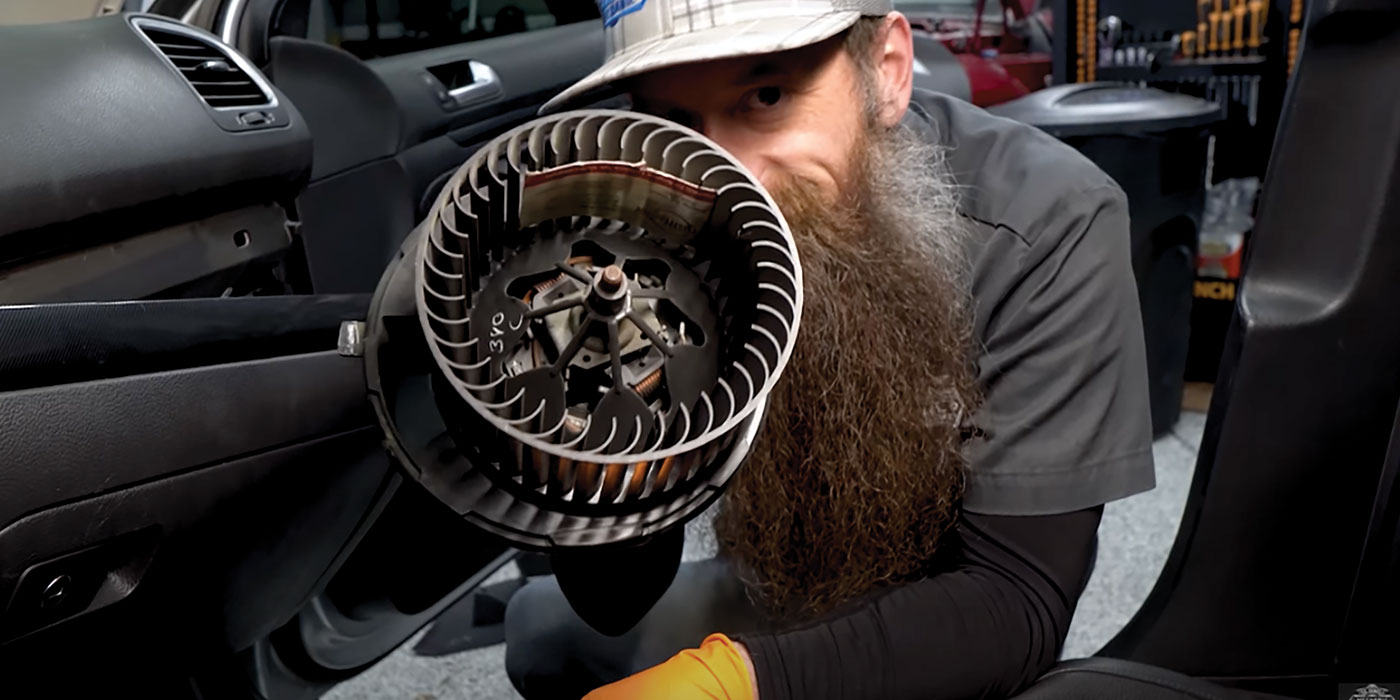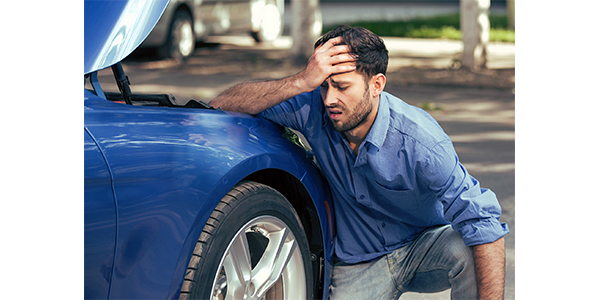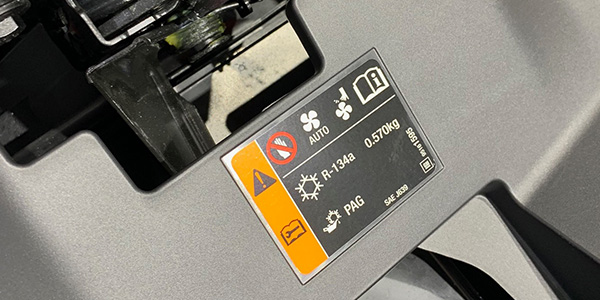Welcome to the 2004 Underhood Service Repair Market Industry Profile, our in-depth report of the independent automotive repair market.
Our profile below highlights many elements that are a part of doing business in today’s repair shops. The information presented is a good indicator to make short-term predictions about these independent automotive repair shops. It’s also a fair yardstick to see how your business measures up to other independent repair shops.
 Unless otherwise cited, the responses, charts and data is from Babcox Research, which executed a mail survey to a random sample of 4,000 subscribers to Underhood Service magazine. It should be noted that responses came from shops in small cities with a population of 15,000 to 99,999 (32%) followed by township or rural area with a population of less than 15,000 (32%), medium city with a population of 100,000 to 499,999 (22%) and finally big city with a population of more than 500,000 (14%).
Unless otherwise cited, the responses, charts and data is from Babcox Research, which executed a mail survey to a random sample of 4,000 subscribers to Underhood Service magazine. It should be noted that responses came from shops in small cities with a population of 15,000 to 99,999 (32%) followed by township or rural area with a population of less than 15,000 (32%), medium city with a population of 100,000 to 499,999 (22%) and finally big city with a population of more than 500,000 (14%).
You may be surprised how your business compares to the responses by repair shops across the country that contributed information provided in this article.
For example, profit margins for parts increased from 36.8% in 2002 to 41.8% in 2004, while profits from labor decreased over the same time. Average profit margin for labor reported for 2002 was 65%, and today that average is 55.8%.
Shop Owner Demographics
While the automotive aftermarket employs a vast array of people from a variety of backgrounds, here is a profile of the typical U.S. service dealer.
According to our survey, the typical U.S. Shop Owner…
Is more educated than in years past. We’ve found 96% of shop owners are high-school graduates, and many have completed other higher learning. About 13% of shop owners surveyed have a college degree, 17% have graduated from a vocational school and 4% finished post-grad school.
Started working for pay in the repair industry around age 19.
Runs a family-owned business. Only one-fifth of independent shops (20%) are not family-owned. Our survey also showed that 11% of the respondents said they own a second repair or automotive-related business.
We found that each week, the typical shop owner spends about 22% of his/her time repairing vehicles, 21% of the time working with customers, 21% managing the business, 18% of the time diagnosing vehicle problems and 11% of the time working with suppliers. The remaining 7% was listed as “other” on the survey. These percentages were very similar to 2002 results.
Talking Shop
Taking a look at repair facility demographics, the average general repair facility…
Has 4.4 bays.
Has 3.7 full-time employees (up from 2.9 in 2002).
Employs 3 technicians.
Has been in business 24.3 years.
Charges $58.53 as the hourly labor rate (up from $53.12 per hour in 2002).
Has an estimated value of inventory (belts/hose, plugs/wires, refrigerants/oils, etc.) of about $7,532 (based on respondents who said they carry a parts inventory).
Shop Computers and the Internet
According to the 2003 Babcox Internet Report, 80% of the shop owners/managers who receive Underhood Service have access to the Internet (either at home and/or at the shop). The report shows that 58% of shops that receive Underhood Service are linked to the Internet.
Most shop owners/managers use the Internet at work for: Locating parts/equipment (60%); Researching tools/equipment (51%); Purchasing supplies for the shop (44%); Searching for training info (31%); Auto-related chat lines (17%); and Advertising for employees (4%).
For more information on Internet use in the shop, look for our feature “Repair Shop Internet Issues” and other related results from the Babcox Internet Survey Report in the August 2005 issue of Underhood Service.
Shop Availability
So how many automotive repair shops are out there? Well, that can change depending on whom you ask. But according to the U.S. Census Bureau’s (www.census.gov) latest totals, there are 164,360 automotive repair and maintenance shops in the U.S. employing 815,149 people. However, this number of shops includes a number of aftermarket segments. The breakdown in the number of shops/businesses is:
General automotive repair: 77,751
Automotive transmission repair: 6,768
Automotive exhaust shops: 5,251
Auto mechanical, electrical and maintenance (which includes radiator, carburetor, brake, alignment and front end shops, etc.: 9,674
Automotive body, paint and glass repair: 41,168
Other repair and maintenance (which includes oil change and lube shops, car washes, etc.: 23,748
Parts and Labor
When looking at parts and labor responses, we found that 22% of our respondents had a total parts and labor sales volume of less than $100,000 in 2004. We speculate that some survey respondents  are leery to provide accurate data to this question even though we keep this information confidential. The remaining “total parts and labor sales volume” figures were: $100,000 to $199,000 (20%), $200,000 to $299,000 (13%), $300,000 to $399,000 (10%) and $400,000 to $499,000 (7%). The percentage of shops with “total parts and labor sales” above a half-million dollars grew dramatically over 2002 responses. Figures for shops in these categories are: between $500,000 and $599,000 (8%), $600,000 and $699,000 (6%), $700,000 and $799,000 (4%) and $800,000 and more, (10%).
are leery to provide accurate data to this question even though we keep this information confidential. The remaining “total parts and labor sales volume” figures were: $100,000 to $199,000 (20%), $200,000 to $299,000 (13%), $300,000 to $399,000 (10%) and $400,000 to $499,000 (7%). The percentage of shops with “total parts and labor sales” above a half-million dollars grew dramatically over 2002 responses. Figures for shops in these categories are: between $500,000 and $599,000 (8%), $600,000 and $699,000 (6%), $700,000 and $799,000 (4%) and $800,000 and more, (10%).
The average parts and labor sales volume for 2004 was $364,722.
Shops reported their average profit margin (the price they bill the customer minus the simple cost of sales) is 41.8% on parts and 55.8% of labor.
The outlook for independent repair shops appears to be positive. According to AAIA, the U.S. motor vehicle aftermarket expanded 3% in 2003 to $244.6 billion. A majority of that growth was the automotive segment (cars, light trucks) which included a 3.7% jump to 182.5 billion. (The heavy-duty segment grew by 1.5% to $62.1 billion.)
This growth is expected to continue, as the number of licensed drivers, registered vehicles and number of miles driven each year also increases. The aftermarket is forecasted to grow by 3.5% to $253.1 billion this year, and an additional 3.5% in 2005 to a total of $261.8 billion. (AAIA said these figures do not include warranty work.)
Diagnostic Charges
Currently, 92% of shops that responded to this survey charge a fee for diagnostic time. While 45% (38% in 2002) said this fee is different from their regular work time, 55% (62% in 2002) said it is not. Most shops (75%) said they charge diagnostic time by the hour, with the remaining 25% charging a flat rate. The average per-hour labor rate charge was $58.53.
 Workforce and Earnings
Workforce and Earnings
Respondents to our survey reported that the average number of full-time employees at today’s shops is 3.7, up from 2.9 in 2002. About 46% of shops reported that they employ part-time staff (typically one or two people).
The average number of technicians per shop reported in 2004 was “3,” the same as the response given in 2002.
Not only was employee staffing up, but our respondents showed annual salaries grew for their most experienced staff.
What equipment do you own and which are you likely to purchase in the next year?
|
Type of Equipment |
Currently Own |
Plan to Purchase |
|
4-Gas Analyzer |
22% |
4% |
|
5-Gas Analyzer |
16% |
11% |
|
A/C Leak Testing Equipment |
76% |
4% |
|
Battery Charger |
97% |
0% |
|
Business Computer |
80% |
8% |
|
Refrigerant Recovery/Recycling Equipment (R-12) |
58% |
3% |
|
Refrigerant Recovery/Recycling Equipment (R-134) |
66% |
5% |
|
Dynamometer |
13% |
4% |
|
Fuel System Service Equipment |
75% |
4% |
|
Computerized Information System |
63% |
9% |
|
Lab Scope |
61% |
6% |
|
Lift |
82% |
10% |
|
Machining Equipment |
60% |
7% |
|
Parts Cleaning Equipment |
84% |
5% |
|
Diagnostic Engine Analyzer < You May Also LikeSeveral States Declare April As ‘Car Care Month’Several governors across the country have declared April as Car Care Month in their respective states, urging their residents to be car care aware and perform the service necessary to ensure their vehicles are operating in a safe, efficient and clean manner. Several governors across the country have declared April as Car Care Month in their respective states, urging their residents to be car care aware and perform the service necessary to ensure their vehicles are operating in a safe, efficient and clean manner. Intake Manifold Gaskets: A Service RundownBack in the days when most Monroe “Quick Rewards” Program Offers Incentives For Sales Of Monroe Quick-Strut AssembliesTenneco’s Monroe brand will offer an incentive to counterpeople for the sale of popular, ready-to-install Monroe Quick-Strut premium replacement assemblies. The Monroe “Quick Rewards” scorecard promotion – available for sales between April 1 and May 31, 2014 – will reward participants with a $10 prepaid card for each pair of qualifying Monroe Quick-Strut units sold.  Three AGM, Gel Cell Battery MythsChances are if the battery is not under the hood, it is an absorbent glass mat (AGM) or gel cell battery. These batteries pack a lot of power for their size and weight, which allows manufacturers to shave off a few pounds from the vehicle. That’s a big reason why they are being found more and more on late-model vehicles. Here are three AGM/gel cell myths. 10 Toughest Cabin Air Filter JobsThere are still many late model vehicles that are not easy to service, and they require a significant amount of disassembly to gain access to the filter. For your shop, this is billable labor. Here are the 10 toughest jobs according to the editors of Underhood Service. Other PostsAutel Energy Makes Debut at Detroit Auto ShowAmong the products introduced were Level 2 chargers, DC bidirectional vehicle-to-everything charging, DC fast charging and more. How To Fix a Blower Motor That’s Not WorkingThe customer is complaining that it sounds like there’s a helicopter behind the dash of his 2014 Jetta.  Selling TPMS At The Front CounterKristen Criswell answers common questions that shops experience on a daily basis regarding TPMS.  Servicing R1234yf: Are You Ready?“What was once a simple creature comfort for upscale motorists, air conditioning systems of today are true thermal management systems, providing not only comfort, but also essential cooling to battery packs and onboard computers in hybrid vehicles.”  |



